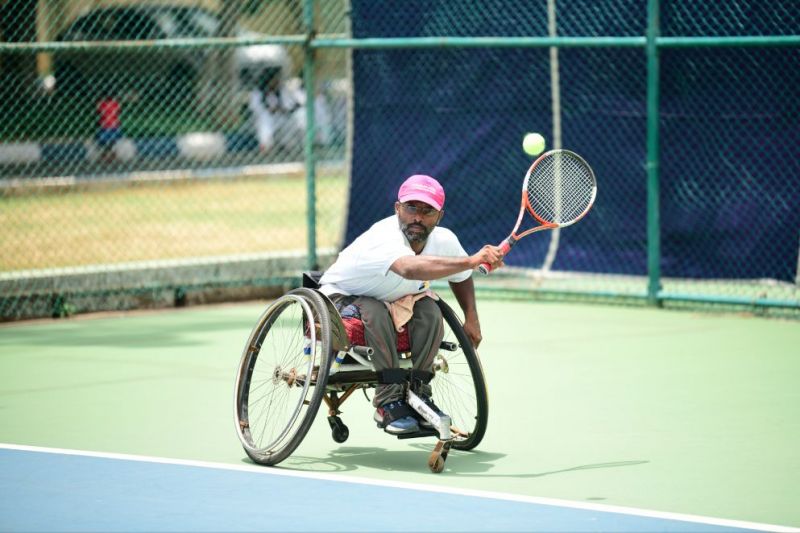The world of wheelchair tennis and India’s tryst with the sport

If you think sport is meant only for the able-bodied, think again. Except for being seated on the wheelchair, these players reckon with the same ground rules – court dimensions, size of the net and scoring pattern. Regular or wheelchair, the underlying passion for playing the sport of tennis remains the same.
Birth of the sport
Brad Parks, considered the pioneer of wheelchair tennis, could not have imagined that an unfortunate accident during a skiing competition would give birth to this adaptation of the sport.
Back in 1976, Brad tried playing tennis in his wheelchair as part of his rehabilitation therapy. He then partnered with fellow wheelchair athlete Jeff Minnenbraker to promote this version of tennis through a series of exhibition events across the world. The fact that wheelchair tennis is now played in more than 100 countries (including Grand Slams) is an epic achievement, thanks to the groundwork done by Brad Parks.
Indian Wheelchair Tennis Tour (IWTT)
There is a saying that every problem throws up an opportunity, provided you have the right perspective. Sunil Jain, a chartered accountant by profession founded Astha, a non-profit organization in Bangalore, in 2008, to empower differently-abled people in the society.
As a 2-year-old boy, Sunil suffered a polio attack and has been bound to his wheelchair since then. The challenges faced by him while growing up is what led to the birth of this NGO. The organization has structured its programs along three pillars – sports, education, and voting rights. In 2014, Sunil Jain along with Priyanka Shylendra, a social entrepreneur, launched Indian Wheelchair Tennis Tour (IWTT). This initiative promotes this adapted sport by hosting events and enabling individuals to pursue it at the competitive level.
Emerging stars
The limited awareness within our society about wheelchair tennis has not deterred Indian players from making a mark at the global level. The latest rankings published by International Tennis Federation (ITF) have four players within the top 200 namely Shilpa Puttaraju, Nalina Kempaiah, Prathima Rao and Shekar Veeraswamy. And there’s more talent in the pipeline, including the likes of Balachandar Subramanian, Karthik Karunakaran, Manojkanth Somasundaram and Madhusudan Hanumanthappa. The journey travelled by each of these players to reach the professional circuit is inspiring.
Shekar Veeraswamy, India’s No.1 men’s singles player hails from a low-income group and is an employee of KSLTA Bangalore. In his youth, he suffered a road accident while riding his scooter and one of his legs were amputated as a result. His love for tennis remained intact and he was unable to stay away from the tennis court, which was a sacred space for him.
Shekar’s grit combined with an act of serendipity by Sunil Jain opened the door to the world of wheelchair tennis. This led to countless hours of training similar to any athlete in any other sport. Shekar believed in himself and the game of tennis. He competed across the country and eventually topped the charts at the national level. Since Shekar never learnt to rest on his laurels, he has now reset his goal to making it into the top 100 world rankings in order to compete at the 2022 Asian Games.
Looking ahead
Amidst numerous challenges faced by players and administrators, IWTT is confident that the future of wheelchair tennis in India is bright. Identifying junior wheelchair tennis players (U-18 age group) and nurturing them is on the horizon for this organisation. Sport being a great leveller has clearly proven it can be a vehicle for social development in our society!
